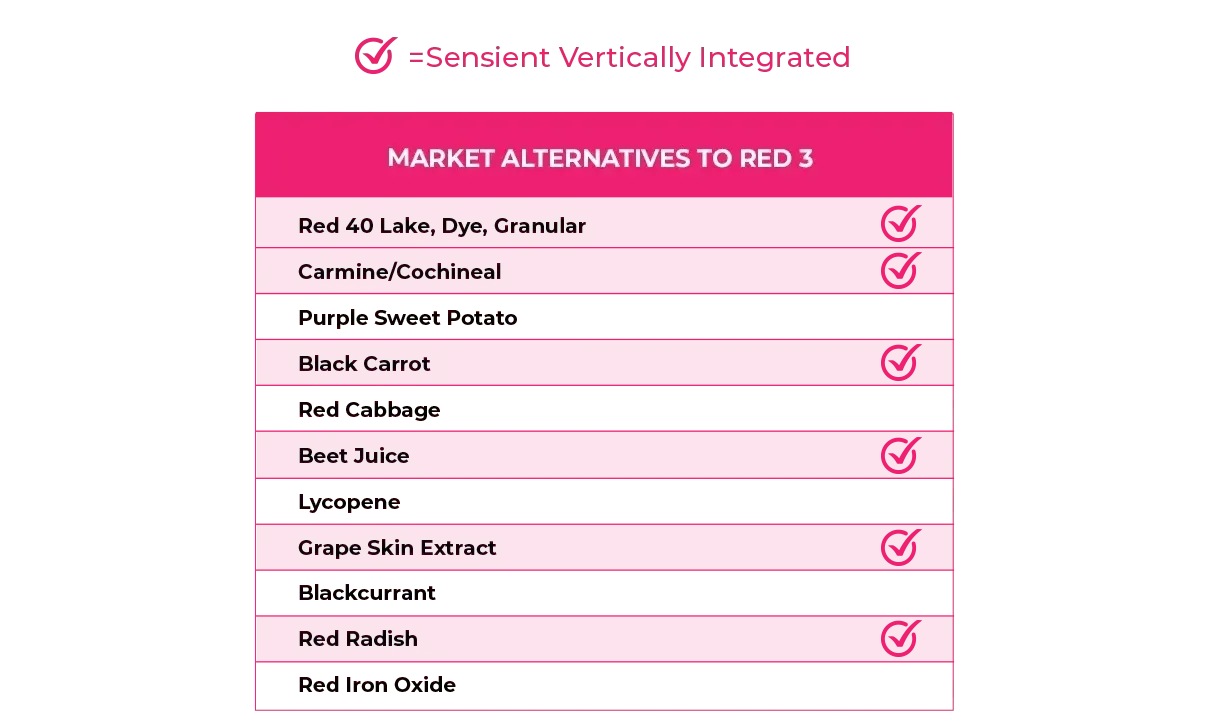

This marks the first time a state has banned ingredients permitted by the Food and Drug Administration.The formal passing of Bill 418 could incite an unprecedented turning point in the food and beverage landscape because it directly challenges the FDA’s national authority over evidence-based regulations.
Although we believe that Red 3 is a safe ingredient to use based on a lack of scientific evidence supporting risk claims, we are here to support our customers in their color needs.
As the color industry’s most vertically integrated manufacturer of both FD&C and natural colors, Sensient is readily equipped to help manufacturers effectively reformulate.


Of the long list of natural pink options, black carrot, red radish, and beet juice perform better than the others from a cost and shade match to Red 3. For high acid and high-water applications, black carrot or red radish color solutions will be your star performers. For most other applications, beet juice color solutions are very nice alternatives to Red 3.
Or, if you are ready to trial alternative solutions on the bench, request color solutions for replacing Red 3 right here.